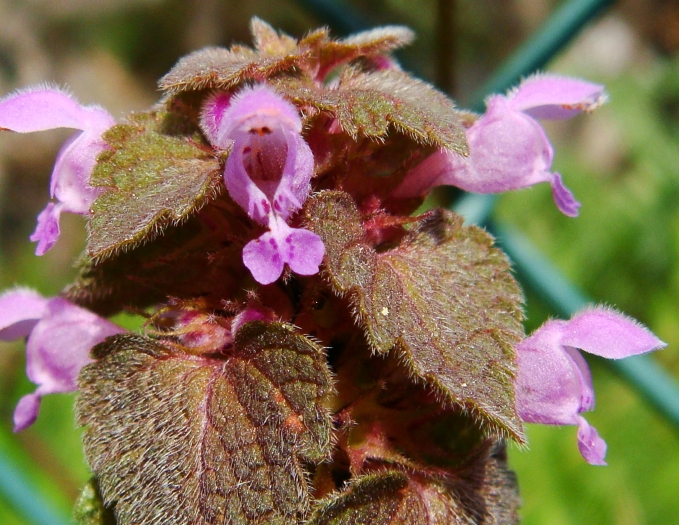Red Dead-Nettle
(Lamium purpureum)
Red Dead-Nettle (Lamium purpureum)
/
/

Gianni Del Bufalo bygdb
CC BY 4.0
Image By:
Gianni Del Bufalo bygdb
Recorded By:
Copyright:
CC BY 4.0
Copyright Notice:
Photo by: Gianni Del Bufalo bygdb | License Type: CC BY 4.0 | License URL: http://creativecommons.org/licenses/by/4.0/ | Rights Holder: Gianni Del Bufalo bygdb | Publisher: iNaturalist | Date Created: 2022-03-16T15:24:48-07:00 |











Estimated Native Range
Summary
Lamium purpureum, commonly known as red dead-nettle, is an herbaceous annual plant native to Europe, Asia, and North Africa, often found in a variety of habitats including disturbed soils, agricultural land, and urban areas. It typically grows up to 8 inches tall and features heart-shaped leaves with a distinctive purplish tinge at the top. The plant produces bright red-purple flowers from early spring to autumn, which are highly attractive to bees and other pollinators. The flowers are small but noticeable due to their color contrast with the foliage.
Red dead-nettle is valued for its early bloom period, providing nectar for pollinators when few other plants are flowering. It is also appreciated for its edible young leaves, which can be used in salads and stir-fries. In cultivation, it prefers partial shade to full sun, moist but well-drained soils, and is tolerant of a wide range of conditions, making it easy to maintain. It can be used as ground cover or in border plantings. However, gardeners should be aware that it can self-seed prolifically and become weedy. It is potentially invasive outside its native range, so it is important to check local regulations before planting.CC BY-SA 4.0
Red dead-nettle is valued for its early bloom period, providing nectar for pollinators when few other plants are flowering. It is also appreciated for its edible young leaves, which can be used in salads and stir-fries. In cultivation, it prefers partial shade to full sun, moist but well-drained soils, and is tolerant of a wide range of conditions, making it easy to maintain. It can be used as ground cover or in border plantings. However, gardeners should be aware that it can self-seed prolifically and become weedy. It is potentially invasive outside its native range, so it is important to check local regulations before planting.CC BY-SA 4.0
Plant Description
- Plant Type: Herb
- Height: 0.5-1 feet
- Width: 0.5-1 feet
- Growth Rate: Rapid
- Flower Color: Purple
- Flowering Season: Spring, Summer, Fall
- Leaf Retention: Deciduous
Growth Requirements
- Sun: Full Sun, Part Shade
- Water: Medium
- Drainage: Medium, Fast
Common Uses
Bee Garden, Butterfly Garden, Groundcover, Low Maintenance
Natural Habitat
Native to Europe, Asia, and North Africa, often found in disturbed soils, agricultural land, and urban areas
Other Names
Common Names: Red Deadnettle, Purple Archangel, Red Archangel
Scientific Names: , Lamium purpureum, Lamiopsis purpurea, Lamium foetidum, Lamium nudum, Lamium purpureum f. albiflora, Lamium urticaefolium, Lamium urticaefolium,
GBIF Accepted Name: